
24-12-2025 17:08
Hulda Caroline HolteHello, I have found this propoloid ascomycete on

21-12-2025 09:32
Hello.A tiny ascomycete found embedded in wood in

21-12-2025 21:32
Pol DebaenstHello, Garden, Burgweg 19, Veurne, BelgiumOn 10/1

22-12-2025 23:38
Patrice TANCHAUDBonsoir, récolte sur un mur en pierre, apothéci

22-12-2025 00:47
Patrice TANCHAUDBonsoir, récolte à proximité du milieu dunaire
I'm again in trouble to classify specimens in Hysteriaceae. In May last year at the topic
"Hysterobrevium mori (?) on Juniperus" - http://www.ascofrance.fr/search_forum/42906
I thought to have found Hysterobrevium mori. More recently, I found other specimens, which seem to be indeed of that species, by the spores configuration and dimensons. I returned to the place the first observation mentioned above and found new specimens. Now, I have no longer doubts that they must be something other than H. mori. I looked again to the E. Boehm´s webpage:
http://www.eboehm.com/hysteriaceae.html
and conclude that my specimens must belong to the genus Oedohysterium, must probably to a species close to O. pulchrum or even itself. The fact is that, the hymenium shows what can be describe as a red pigmentation as well as the spores, which have (5-) 6 transversal septa and most of them have a longitudinal septum at the 3rd cell from the apex, some of are also longitudinally septated at adjacent cells, and some have no longitudinal septa at all. All these feature fit quite well in the above mentioned species, but the spores dimensions, more precisely their widht does not fit. I got the following values:
(22.3) 22.8 - 26.8 (27.3) × (6.3) 6.7 - 7.7 (7.8) µm
Q = (2.9) 3.1 - 3.7 (4.1) ; N = 30
Me = 24.7 × 7.2 µm ; Qe = 3.4
whereas the values given at eboehm.com are:
22 - 25 (-27) x 5-6 µm.
Can anyone give an help?
Thanks in advance,
zaca
P.S.: I saw that Alain Gardiennet recently posted on the Database another species of Oedohysterium, O. insidens, whose spores are only tranversely septated and bigger (I presume).
Hi Zaca,
Your analysis is exact : it's an Oedohysterium very very closed to O. pulchrum.
Did you colpare with the the paper Checa et al. 2007 ?
Alain
I add scale on one photo of O. insidens
Thanks for the confirmation of my analysis. I could not access the paper of Checa et al. (2007).
Best regards,
zaca

Checa & al. 2007- I do not have it either :-)
Regads, Lothar

Checa et al. Some new hysteriaceous Fungi from Costa Rica, Mycologia, 99(2), 2007, pp. 285–290.
Ami Alain, il faut citer tes références pour les copains.
but paid. Since this research is not financed I will not pay for it.

Regards,
zaca

Thanks a lot, Francois!
Best regards, Lothar
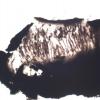
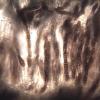
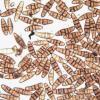
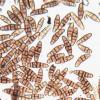
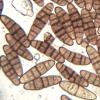
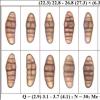
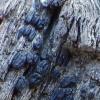
 Ascus
Ascus